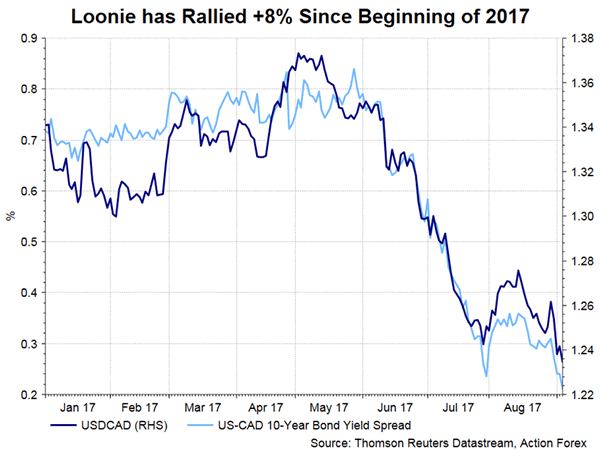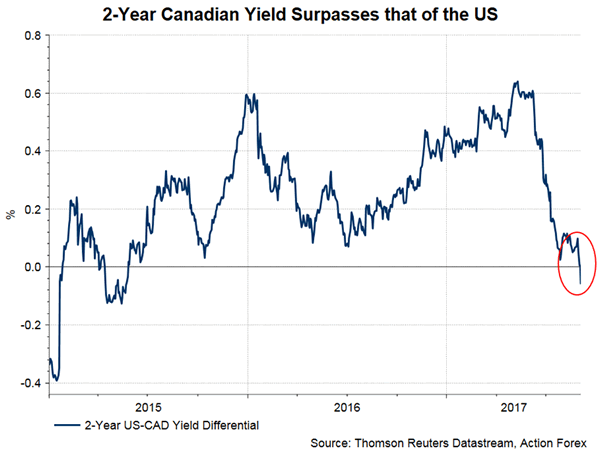In a surprising move, BOC increased the policy rate by +25 bps to 1% in September, following a rate hike in July. Policymakers cited the better-than-expected economic developments as a key reason for the removal of stimuli from the market. However, they remained cautious over a number of issues including excess capacity, subdued inflation, geopolitical risks and the strength in Canadian dollar. On the future tightening path, the central bank stressed that it is "not predetermined" and "will be guided by incoming economic data and financial market developments as they inform the outlook for inflation". We believe the progress of NAFTA renegotiations and other trade-related issues, the inflation outlook, the housing market developments and the Fed’s balance sheet reduction would be key factors driving BOC’s rate decision.
Real GDP growth accelerated to +4.5% in 2Q17, form +3.7% in the prior quarter, marking the best 4-quarter performance since 2006 and well above BOC’s estimate of 3%. Contribution to growth came mainly from private consumption and gross capital formation. As BOC noted in the accompanying statement, "recent economic data have been stronger than expected, supporting the Bank’s view that growth in Canada is becoming more broadly-based and self-sustaining". It also acknowledged that consumer spending was robust. Yet, BOC maintained a cautious note, signaling "a moderation in the pace of economic growth in the second half of 2017".

While admitting weak inflation, policymakers acknowledged "a slight increase in both total CPI and the Bank’s core measures of inflation, consistent with the dissipating negative impact of temporary price shocks and the absorption of economic slack". They continued to caution over the "excess capacity" in the job market, as well as the subdued growth in "wage and price pressures"

While raising the policy rates for two consecutive meetings, BOC stressed that "future monetary policy decisions are not predetermined and will be guided by incoming economic data and financial market developments as they inform the outlook for inflation". It emphasized that "particular focus will be given to the evolution of the economy’s potential", the "labour market conditions" and "the sensitivity of the economy to higher interest rates".
Outlook
In our opinions, BOC’s future monetary decision would be dependent on the following issues. First, the third and fourth rounds of NAFTA renegotiations would take place in end-September and end-October respecitlvely. The highly uncertain outcomes signal the centla bank would be cautious. As an export-oriented economy with the US the biggest trading partner, the new trade relations would affect Canada’s economic growth outlook. Exchange rate would be closely watched too. Although Canadian dollar has risen about +8% against US dollar since the beginning of the year, the trade-weighted index is still not elevated. Therefore, we do not see exchange rate a threat to the coutry’s exports for now. Second, although BOC noted the imporvement in inflation, both headline and core readings have styaed far below the +2% target. Further stregnth in the loonie might cotinue to weigh on inflaiton. Third, there have been signs of a softer housing market as a report by tge Canadian Real Estate Association shows that national home sales dropped for a fourth consecutive month, by-2.1% m/m in July. Finally, BOC would be paying close attention to the Fed balance sheet reduction plan. In July, the Fed indicated that balance sheet reduction would begin "relatively soon". We expect a formal announcement would come in the upcoming meeting on September 20.














